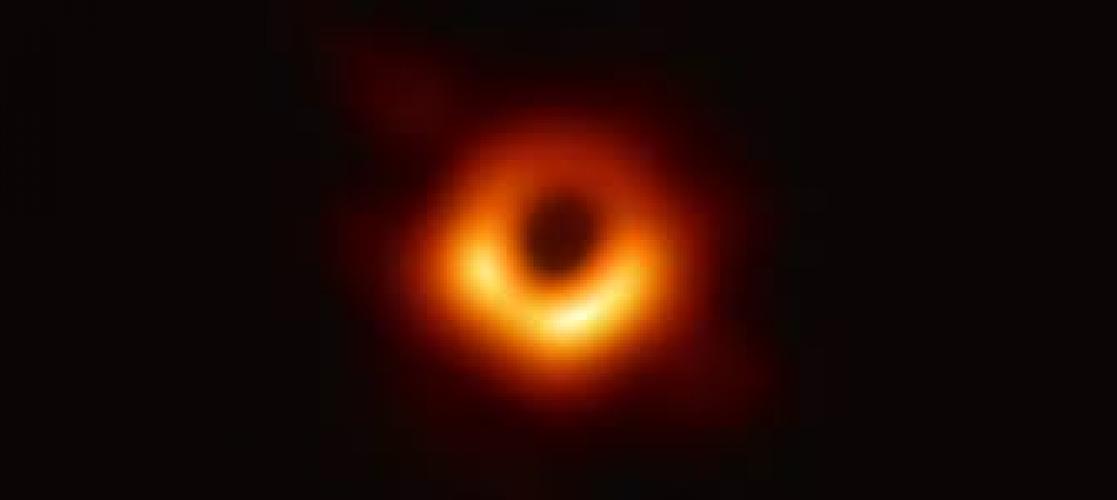EU-funded scientists unveil first ever image of a black hole

The first ever observation of a black hole is the result of the large scale international research
collaboration Event Horizon Telescope (EHT), where EU-funded researchers have played a key role.
This major scientific achievement marks a paradigm shift in our understanding of black holes, confirms
the predictions of Albert Einstein's General Theory of Relativity and opens up new lines of enquiry into
our universe. The first image of a black hole successfully captured was unveiled in six simultaneous
press conferences across the globe today.
Commissioner Carlos Moedas, responsible for Research, Science, and Innovation, said: “Fiction often
inspires science, and black holes have long fueled our dreams and curiosity. Today, thanks to the
contribution of European scientists, the existence of black holes is no longer just a theoretical concept.
This amazing discovery proves again how working together with partners around the world can lead to
achieving the unthinkable and moving the horizons of our knowledge.”
President of the European Research Council (ERC), Professor Jean-Pierre Bourguignon, added: “I
congratulate the scientists across the globe who made this inspiring discovery and pushed the frontiers
of our knowledge. I'm especially glad to see that scientists funded by the European Research Council
contributed decisively to this breakthrough. The EU's bold approach to funding such paradigm-shifting
blue-sky research leads once more to a success story. It also further validates the ERC's objective to
fund high-risk/high-gain research.”
EU funding through the European Research Council (ERC) has provided crucial support to the EHT. In
particular, the EU has provided funding for three of the leading scientists and their teams involved in
the discovery, as well as supported the development and upgrading of the large telescope
infrastructure essential to the success of the project.
Today's results add to the many achievements of the EU's research and innovation funding
programmes Horizon 2020 and its predecessor Framework Programmes. Building on this success, the
Commission has proposed Horizon Europe, the most ambitious EU programme yet to keep the EU at
the forefront of global research and innovation.
BACKGROUND
Black holes are extremely compressed cosmic objects, containing incredible amounts of mass within a
tiny region. Their presence affects their surroundings in extreme ways, by warping spacetime and
super-heating any material falling into it. The captured image reveals the black hole at the centre of
Messier 87, a massive galaxy in the constellation of Virgo. This black hole is located 55 million lightyears
from Earth and has a mass 6.5-billion times larger than our sun.
To allow the direct observation of a black hole's immediate environment, the Event Horizon Telescope
has sought to upgrade and connect a worldwide network of eight telescopes across the globe. These
are located at challenging high-altitude sites, including in the Spanish Sierra Nevada, volcanoes in
Hawaii and Mexico, mountains in Arizona, the Chilean Atacama Desert, and Antarctica. More than 200
researchers from Europe, Americas and East Asia are participating in this major international
operation.
The EU's European Research Council has provided funding to scientists involved in the EHT
collaboration through the following projects under the EU's Horizon 2020 and 7th Framework
Programme:
The €14 million BlackHoleCam project which aims at capturing the image, measuring and
understanding black holes. Since 2014, this six year research project is being carried out by three
lead scientists and their teams; namely Professors Heino Falcke from Radboud University Nijmegen
-
IP/19/2053
(also Chair of EHT Science Council), Michael Kramer from the Max Planck Institute for
Radioastronomy, and Luciano Rezzolla from Goethe University Frankfurt.
The RadioNet project supports a consortium of 27 institutions in Europe, the Republic of Korea and
South Africa that aim to integrate world-class infrastructures for research in radio astronomy. This
includes radio telescopes, telescope arrays, data archives and the globally operating European
Network for Very Long Baseline Interferometry (EVN). The project is coordinated by the Max
Planck Institute for Radioastronomy. In the past 15 years, the EU invested €30.3 million in
RadioNet.
-
The European Research Council, set up by the EU in 2007, is the premiere European funding
organisation for excellent frontier research. Every year, it selects and funds the very best, creative
researchers of any nationality and age, to run projects based in Europe. The ERC offers four core grant
schemes: Starting, Consolidator, Advanced and Synergy Grants. With its additional Proof of Concept
grant scheme, the ERC helps grantees to bridge the gap between grantees' pioneering research and
early phases of its commercialisation.
FOR MORE INFORMATION
Black hole photos and videos on Commission's audio-visual portal
Event Horizon Telescope press release
European Commission press conference on Europe by Satellite
European Commission press conference on EUtube
Follow the news on Facebook, Instagram and Twitter using the hashtag #RealBlackHole
European Research Council news story
Press contacts:
Lucia CAUDET (+32 2 295 61 82)
Victoria VON HAMMERSTEIN-GESMOLD (+32 2 295 50 40)
Mirna TALKO (+32 2 298 72 78)
General public inquiries: Europe Direct by phone 00 800 67 89 10 11 or by email
